Added 1 new A* page:Okay, we are continuing the discussion from yesterday, where I was pointing out panels in his Flash Gordon newspaper comic strips that seem to show artist Alex Raymond starting to switch up his art style in mid 1938: in general, going from the lustily inked, pure drawn-from-his-head style he'd honed since starting the strip in 1934, to something more photo-realistic, attained with the aid (in some cases speculative, but later definite) of reference or live models.
He was experimenting with these tools, I continue to conjecture, with both success and, sometimes, less than success. As an example of a success, I give you a panel from the May 31st, 1938 strip (two weeks after the last panel we looked at):
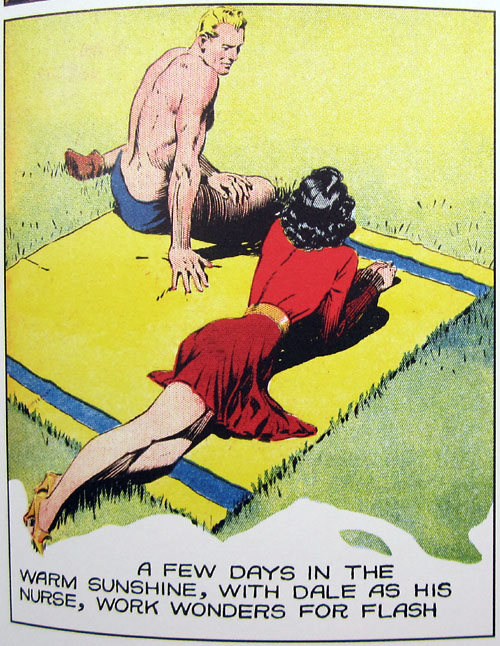
Here I would guess that he had the help of reference of some sort to achieve the seemingly effortless, perfect perspective and poses of Flash and Dale at rest. This high perspective had not really been seen in the strip up to this point, nor had we seen such an idyllic, relaxed, Earthlike scene, really. It was also unusual to have Dale completely turned away from the viewer; I would posit this suggests the use of a reference photo of two people at a beach, where the photographer wasn't concerned about capturing "characters," just forms. I could, of course, be completely wrong! Anyway, nice panel.
Ming the Merciless underwent probably the most drastic transformation in this transition of styles. It looks to me like Raymond found a very strong, very specific model's face to use for Ming, in particular one with very expressive high cheekbones and gaunt cheeks; we had not seen this particular style of cheek from Raymond before these experiments began (two more weeks on, from the August 14th, 1938 strip):
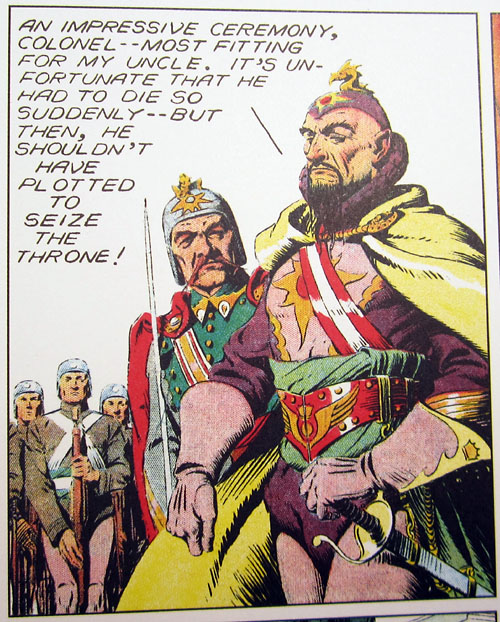
This new incarnation of Ming also has rather sad, lidded eyes—and this illustrates a down-side of relying on reference, because from the point a few months later where Raymond switched permanently to this new Ming, we never again would see Ming looking really crazily excited, eyes staring, as we had so often in the past; for instance (from April 10th, 1938):
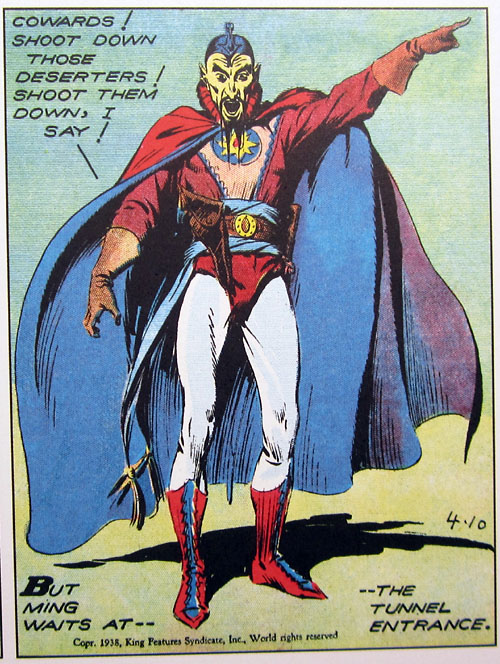
A much less attractive fellow there, to be sure, but one you could really believe was a maniac who wanted to rule Mongo at all costs, and didn't cry into his pillow at night.
Aside from facial expressions, there's also the question of being able to get the right poses out of your models. Consider Flash and Dale's body language in this very referenced-looking strip from October 23rd, 1938 (this is after Raymond switched permanently to the photo-realistic style, on September 11th):
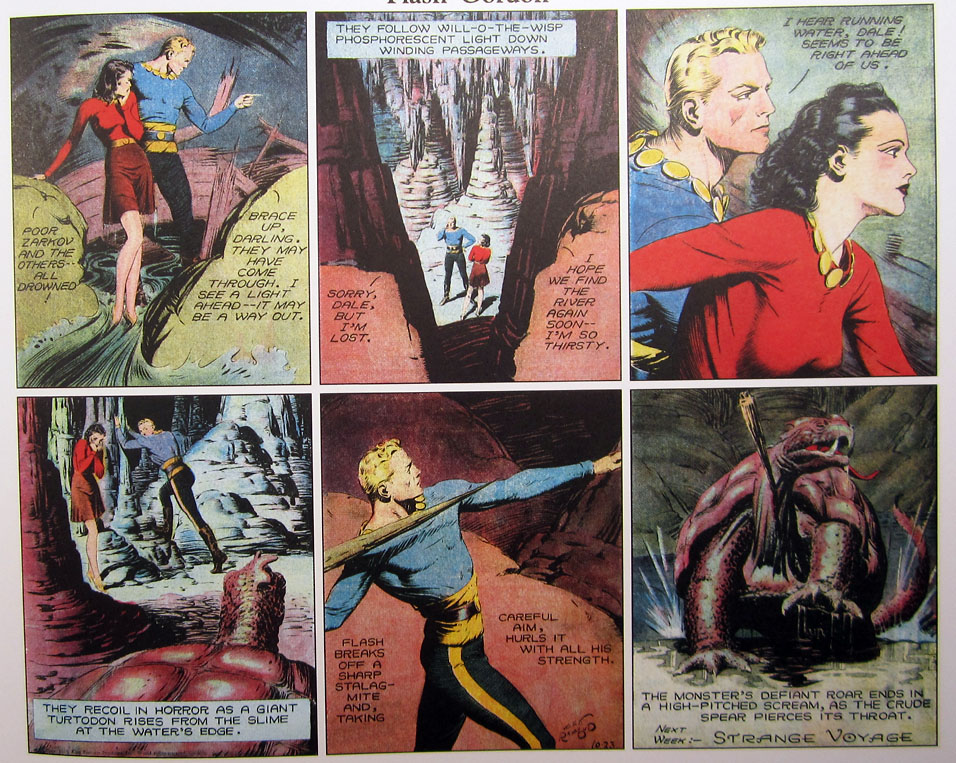
In panel 1, Flash is meant to be pointing toward a way out, but it looks like he's giving someone the evil eye. (Let's just pass over the weirdly elongated/plucked eyebrows on both "actors" in panel 3. : P) In panel 4, Flash is supposed to be recoiling in horror, but he looks like he's maybe doing some calf stretches. In panel 5, we can imagine Raymond telling his Flash model to look like he's about to throw a spear, and the model assumed the classic, millenia-old Greek javelin-thrower pose, as if this was going on an antique vase; unable to use a model to capture the more exciting "throws with all his strength" part of the caption, Raymond settled for the canned, much less dynamic "careful aim" bit, because that's what the model could do. Canned or static poses are another potential downside of relying on models.
Dramatic foreshortening of figures in action, particularly in combat, wasn't really studied intensely by comic illustrators, maybe, until the ultra-exaggerated, hyper-dynamic "Marvel Way" (as Stan Lee dubbed it, I think) pioneered by Jack Kirby in the early '60s. Raymond, perhaps given courage by his access to models, tried a punch toward the viewer in this panel on November 27th, 1938,
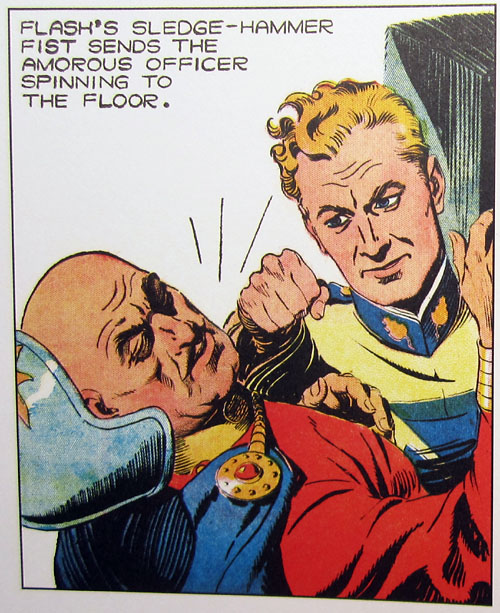
but it doesn't really come off as convincing, either in the scale of the foreshortening or in Flash's pose, which is far too static—and it's hard to imagine how his fist is connected to his shoulder, if he's really leaning into the punch. Punching and similar actions are another thing that's pretty hard to capture from a posed model; Kirby, by way of contrast, didn't use models, and in fact didn't even care about realistic anatomy, which allowed him to channel pure, violent action in its full sweep and animation.
Wait a sec, I know I have a sample Kirby panel around here somewhere. Ah, yes, this is the one I showed last November, from Kirby's OMAC issue 5, June 1974 (Do not try this at home!):
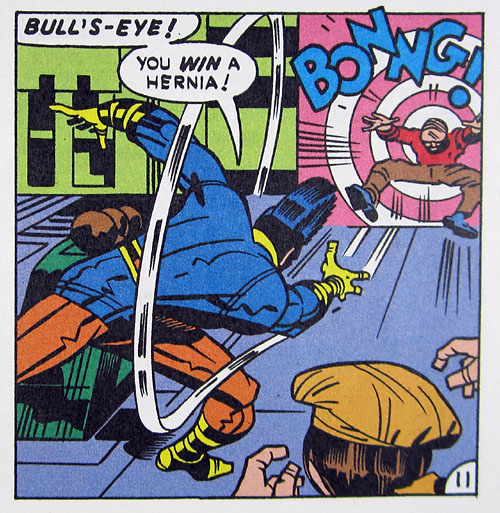
Anyway, back to Raymond. Use of reference did help Raymond do some really nifty stuff, though. For instance, check out the convincing directional lighting effect he gets on the characters in this cockpit in the January 1st, 1939 strip:
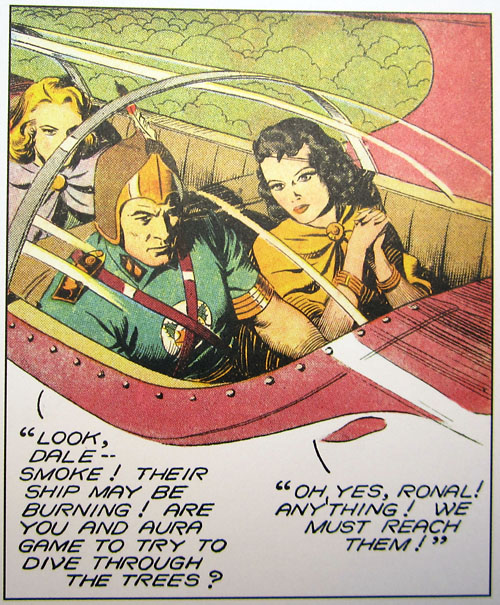
Pretty sharp! And, in that same strip, it was surely models that allowed him to capture a difficult under-the-chin double perspective and counter-reflected lighting in shadows so perfectly (Flash's eyes may be a bit too wrinkly, but alas, models age like anyone else : p):
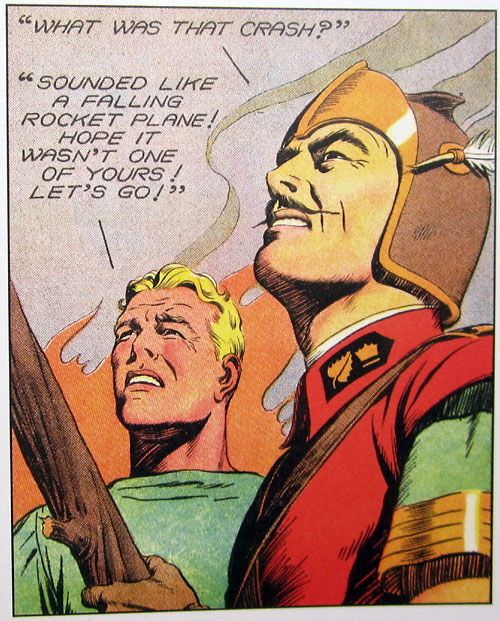
And after these months of trial and error, Raymond eventually got his model method down to the point where he could blend it pretty darn seamlessly, most of the time, with his pure illustration, as we see in the February 19th, 1939 strip:
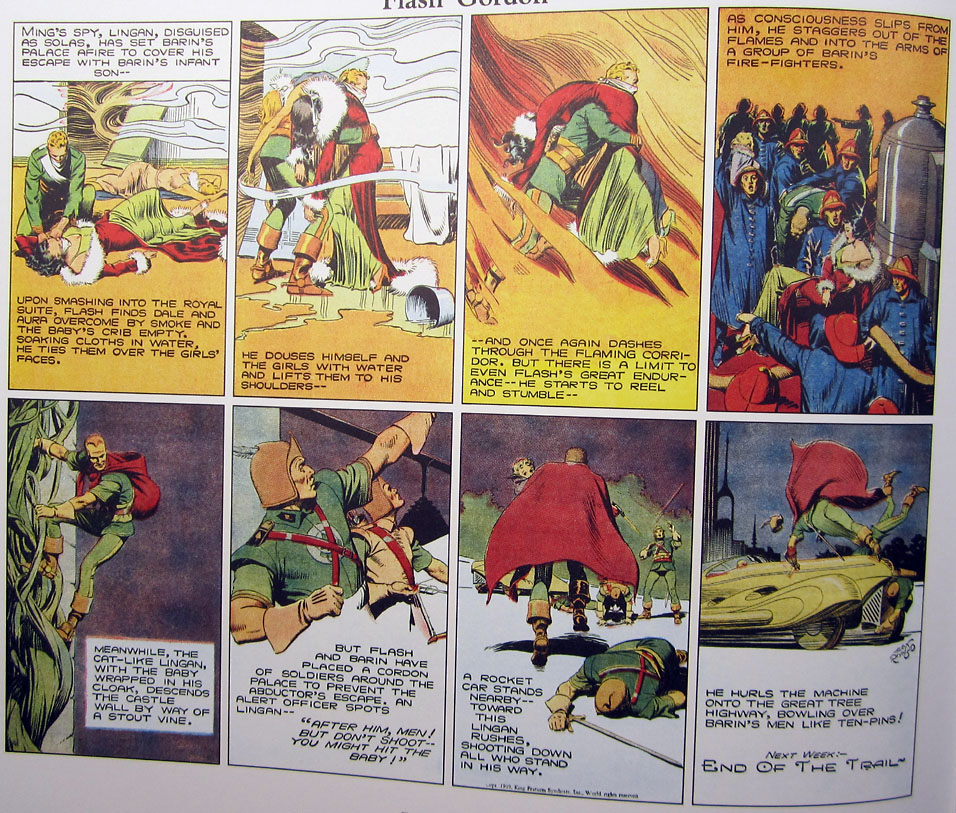
The complicated weighting of the figures in panels 2 and 5 there suggests the assistance of models, as does the posed but realistic positions of the archers in panel 6, and yet when Lingan springs into full action in the final two panels, in off-balance poses that no model could have held, and which would probably have been quite difficult to capture in a photo, Raymond is able to draw the poses he needs in a style that is as sharp visually as his more reference-assisted work. Notice also that he helped his cause with a clever bit of sleight-of-hand: by turning the non-referency poses away from the viewer, he saved himself the trouble of having to try to draw faces that would have had to match the faces on the more referenced preceding frames.
I would say that personally I still prefer my comic artists when they draw really well without reference, but I've yet to give volumes 3 and 4 of this IDW Flash collection a thorough going over, and if anyone can change my mind, it will be Alex Raymond.
|
